Andy Seven's Blog, page 17
July 4, 2014
Little Johnny Jewel (Parts 1 & 2)
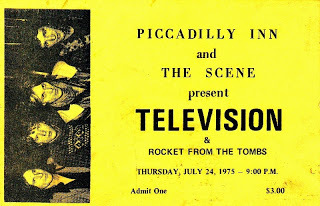
Everybody wants their stuff and they want it now. "We want the world and we want it now", bleated Jim Morrison almost fifty years ago and nothing has changed. If you want a song or an entire record you can get it a matter of seconds, movies, books, you name it. But it wasn't always that way.
In 1975 glam was going through its last gasp - you knew it was over when The Edgar Winter Group was throwing on the spackle and platform boots. Punk rock crawled its way through just like the freaks crawled under the circus wagon in the thunder storm with knives in their mouths, ready to gut Venus and Hercules.
I followed the glam scene closely in Rock Scene Magazine and there were gurgles about punk bands in New York like The Ramones, The Fast, Patti Smith, The Mumps, The Stilettos and Television. Television was the most interesting looking as they were the very antithesis of glam: short hair, no makeup, torn clothes and crappy pawn shop guitars. One particular photo by Christopher Makos of Tom Verlaine and Richard Hell made them look like Richard Speck and Charles Starkweather formed their own noise band. The only nod to glam was Richard Lloyd, who sported platinum blonde hair like Debbie Harry.
Rock Scene Magazine printed a little caption announcing an exciting new single by Television called "Little Johnny Jewel (Parts 1 & 2)" on Ork Records. It only cost $3.00 and could be purchased post paid from a P. Laughner in Cleveland, Ohio. It was the most eagerly anticipated single of its time. Yeah, back in the day we had no downloads. We had to send money across the country for a 45 RPM single. There was a quite a wait (more on that in a second) but the wait was worth it.
After sitting out for an eternity waiting for the single to arrive I received an interim postcard from Peter Laughner, the front of the postcard advertising Television with his band Rocket From The Tombs (who would later split into The Dead Boys and Pere Ubu). On the other side of the postcard was an apology from Peter Laughner for the delay.
"Dear Avram*- As regards TV all orders were forwarded to New York City as the response was fantastic they had to do a third pressing of the record to meet demands - please be patient and thank for your support.
Peter Laughner
P.S. As further correspondence should be directed to me at the above address (Cleveland Heights, Ohio)".
Well, I eventually got my single and it was so bizarre, not what I expected, it wasn't rock but it was definitely a very New York record. What does that mean? Well, I see the Museum of Modern Art when I hear the single, I hear some jazz club like The Five Spot. I feel beatnik frequencies ripping into my head, ESP-DISK nightmares, even some of The Godz and Silver Apples in their sound. Very New York.
"Little Johnny Jewel (Parts 1 & 2)" sounds like a dark, dark, dark beatnik coffee house, seductive in its intimacy. You can smell the burning candles - the record sounds ascetic for its time, avoiding the decadence of Queen or The Tubes or any other overproduced glam rock of the time.
Part 1 begins with Fred Smith playing a very simple bass line over and over while the guitars make twittering and plucking noises, like they're waking up and then Billy Ficca's drums kick in, not playing a simple 4/4 punk beat, but shock horrors (!!!) it's a disco beat.
As soon as the drums simmer a cool disco beat the guitars wail a remedial, almost naive fanfare. Tom Verlaine sings a very cool, laid back vocal like Lou Reed in "Here She Comes Now".
What's so remarkable about the recording is that it's a veritable textbook in dynamics, drums exploding one moment then simmering, guitars howling and then whispering. I like the part where Tom whispers like a hypnotist, "And he ran down to the airport...the rush, the roar...and he crouched down behind a fence...with a chest full of lights..." The guitars go impressionist, playing sparse but bright notes like airport lights, continuing quiet hypnotic sounds with the drums sending us out of Part 1.
Part 2 picks up where Part 1 left off, the hypnotic part building up into a noisy palette of sounds, guitar picks banging against necks like Jackson Pollock splatters of paint, and then explodes into a perverse flamenco guitar solo. All the guitars eschewed the big fuzz Marshall stack arena sound, Richard Lloyd strumming simply behind Verlaine's freedom guitar playing.
The second side ends with Verlaine returning to the main theme, crooning cooly, "Oh Little Johnny Jewel...he's so cool...but if you see him looking lost...you ain't gotta come on so boss!
And you know that he's paid...you know that he's paid the price...all you gotta do for that guy...is wink your eye". Mysterious lyrics, mysterious music. Entranced by TV.
Rock groups weren't supposed to be mysterious or quietly sly, music was by and large loud and brash. Television made people nervous because they weren't a quick study. Personally I thought "Little Johnny Jewel" was a far more auspicious debut than Patti Smith's "Piss Factory" which had a corny Broadway musical jive to it. It could've been a show stopper in a musical like "Rent". But I digress.
Television released a single which sold out several times over and captured the mystery of New York. It was executed so well even the band had trouble living up to their promise with subsequent recordings. It wasn't punk rock but it wasn't average Joe rock, either. It was lightning in a bottle set to music. What a great five minutes it was.
*****************************
* I used to use my Hebrew name in correspondence, in this case being Avram, Abram also known as Abraham before God anointed him as Father of the Jews. In other words, as Sun Ra once said, "I have many names, names of mystery, names of splendor".
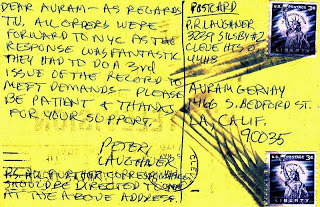
June 28, 2014
Fifty Years in Los Angeles
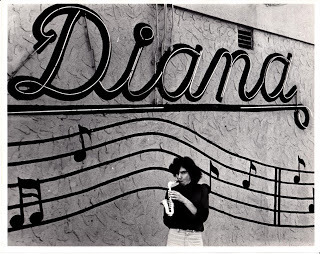
This is the year and that was the year and it all comes down to half a century of living in Los Angeles, mostly Hollywood. No, it doesn't all seem like yesterday; in fact it feels like several lifetimes ago. The Twentieth Century didn't fuck around, what with every decade feeling like another life spent.
How did I even get here? I was just a European boy living the Yankee life in Rhode Island and liking it. I was living in Kennedy Country (New England) and our man John F. Kennedy was in The White House. Everything seemed cool. My father was in the electronic designing department at Brown University in 1963. A few months later Kennedy was toast and so was New England for us.
My father joined the New Frontier headed towards outer space and the psychedelic landscape of Hollywood. He got a job offer from Aerospace in Redondo Beach. Redondo Beach, Manhattan Beach, Long Beach and all points south turned Southern California into a veritable Boomtown for Aerospace workers. My father heard the siren call to Boomtown USA, not mere gold but better, designing spacecraft, missiles and rocket appendages. Welcome to Los Angeles.
Sixties: My first home in Los Angeles was around West Hollywood in the Fairfax District...it was insane, we were sandwiched in between CBS Studios with its ever watching eye, the Silent Theatre and the enormous Pan Pacific Auditorium...we'd have dinner at Canter's and I'd stare at the freaks with their long hair and beads...my Mom said, "Andy, don't stare"...people were getting pissed...I remember watching the Watts riots on TV and my parents said "Stay home today"...
Two years later we moved to Beverly Hills...I went to a modern Hebrew school where half the kids looked like they came from mixed marriages but I didn't care.... they were building Century City down the street and LBJ was going to speak at the Century Plaza Hotel with kids marching down Olympic Boulevard, protesting the Vietnam War...we were too broke to do anything big on Saturday night my dad took us out for a ride (families used to do that sort of thing) down Sunset Boulevard which was crowded as hell, especially since there were so many paddy wagons pulled up in front of Pandora's Box on the corner of Sunset and Crescent Heights.
Seventies: My teenage years were spent in endless nights at Rodney's English Disco and watching countless glitter bands at the Santa Monica Civic Auditorium...glam rock seemed like it would never die, it just got bigger and crazier and I got into the scene, platforms and velvet flares...Westside days spent going to summer school at University High and Rhino Records in Westwood...taking endless jazz music courses, harmony theory and the whole damn Big Band thing at the Dick Grove School of Music in North Hollywood...
Then driving down to gay discos like The Other Side in West Hollywood...Santa Monica Boulevard haunts like a weird old dream even to this day...and then there were punk rock memories at The Masque, playing there and even living there with Spazz Attack and Brendan Mullen, moving to punk palace The Canterbury, big mistake but so what?
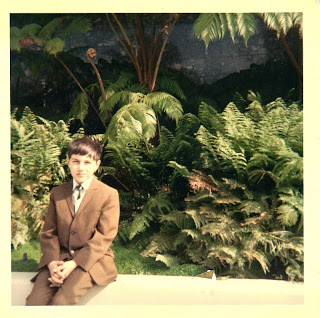
Eighties: Disappointed by the decay of Hollywood punk and shitty new wave I retreated into endless movie shows at The Beverly Center, sitting in my car in the darkness of the Centinela Drive-In with the Studio Drive-in across the street, right by LAX so during the film you'd watch the jet planes swooping down for a landing...
I lived across the street from A&M Records on la Brea Avenue in a trashy courtyard next door to a massage parlor..one rainy night I found a hundred dollar bill by the parking lot...bought a leather-bound saxophone case with it...Rajis was the rockin' club by the end of the decade and I watched The Nymphs, Haunted Garage and Pygmy Love Circus, the greatest club ever...I started my own band Trash Can School and we recorded at Radio Tokyo in Venice for about three years (1988-1990)...it was epic.
Nineties: My band played with some amazing bands at The Shamrock and Jabber Jaw, I'll never forget them...I lived at The Gramercy Apartments in Koreatown, apartments that recalled every noir film you've ever seen...Elisha Cook Jr. must have drifted through the walls several times...after I broke the band up I moved to the Miracle Mile and went to every lowbrow art show at Luz De Jesus on Melrose Avenue, there was Pablo and Pizz and Robt. Williams and XNO and Billy Shire, Golden Apple Comics representing, too...
Then there was Johnny Legend and Eric Caidin putting on sleazy movie shows at the Florentine Gardens on Sundays...I married Rebecca and we created fashions for The Fetish Ball and every other kinky fetish event in town... we also had a band called Cockfight and made a funny video with Ron Jeremy, it was clean, it's cool.
Y2K: Rebecca and I worked morning, noon and night...dealing with bullshitting imagineers who knew nothing about art, smarmy stylists who knew nothing about fashion and a lot of TV people who wanted to interview us and show our clothes....then there were the Comic-Con assholes who knew nothing about anything and the money slowed down so I worked at Dodger Stadium for awhile in the executive office designing their merchandise catalog...the palm trees circled around Dodger Stadium looked like a dreadlocked tribe of dinosaurs looming over the city...bored with that I drifted into a 15-year career with Los Angeles County....played my last show ever at Headline Records on Melrose Avenue...LA, always LA.
Teens: So fifty years later I still eat at Canter's and haunt the streets of West Hollywood. Now I'm a writer, writing, always writing...tell the story even if no one wants to listen, read the words of God even if no one believes anymore...making clothes for myself and other people, hitting the Garment District in the early morning...although there were a few detours here and there in New York and Europe I always returned to Los Angeles like an old habit I couldn't shake off..I'm still in Hollywood...still making noise, still making trouble...take my advice, don't forget to go to the beach.
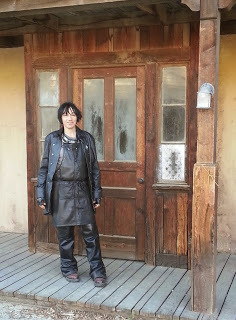 \
\
June 20, 2014
Cruel Story of Youth
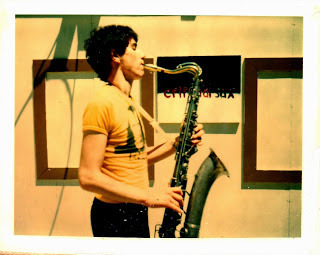
I didn't count on thinking too much about the past because it's something I don't normally do. Silly fool, I believe in looking forward, always now and forever, but the past comes back when you least expect it, like it or not. Case in point: a single I recorded in 1977 just recently turned up on a punk rock CD compilation for the first time.
It was the first band I ever played in, it was called Max Lazer and the single was "Street Queen", released on Siamese Records. Max Lazer was a singer-songwriter who looked like Thor minus the muscles and he had shiny platinum blonde hair that drove the girls all wild. He had a glam rock image but was more of a metal-punk sounding guy. Siamese Records up to that point was known only for putting out Iggy & The Stooges' bootlegs of "Raw Power" outtakes.
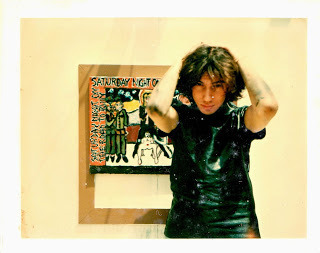
Anyway, the CD featuring "Street Queen" is called "Godfathers of LA Punk" (ouch!) and also has tracks from The Controllers and yup, some Iggy & The Stooges tracks. The entire album could be bought here: Godfathers of LA Punk, or better yet, just buy the download of "Street Queen" HERE. I didn't play on the other Max Lazer track so you're on your own there. I don't think we were very punk rock, in fact the most apt description of our sound would be glam-period Mott The Hoople. If you liked "All The Way From Memphis" or "Golden Age of Rock & Roll" then you would have liked us.
The funny thing about Max Lazer was that I remember playing a show with him at Baces Hall in Los Feliz around the spring of 1977. I caught the punk rock fever the previous summer when I went to London and saw The Sex Pistols, The Clash and The Buzzcocks, so when I did the gig I wore a ripped wife beater with Polaroid photos safety pinned all over them. No big whoop in jaded 2014 but it seemed like a big deal back then, especially to one person in particular.
Brendan Mullen, punk rock impresario and author of several punk history books, confessed to me a year after my show that he was in the audience that night and said I was the very first punk he saw when he came to Hollywood. Too much! He also thought it was awesome when I occasionally broke into extended free jazz sax breaks on some of the more sludgy metal songs. There were a lot of people at the show that night so I'm sure he was there. As Lou Reed once sang "those were different times".
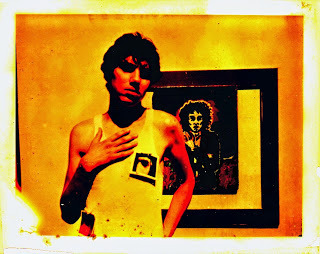
"Different times" which people still miss! Rebecca has a friend who scouts for anything designed by the SEX label from 1976 aka Vivienne Westwood and Malcolm Maclaren's store in Chelsea. I wrote a blog about it called The Rubber And Leather T Chronicles (http://blackhairedboy.blogspot.com/2012/11/the-rubber-and-leather-t-chronicles.html).
I recently unearthed some pics of myself rocking the leather and silver rubber tees I bought from that store way back when. Just a few of them are posted here for your entertainment, and no, neither one is for sale. Well, the rubber tee decomposed two years after I bought it, anyway. The leather one's still around here somewhere.
Here are some of the pictures, and it's funny. I had so many taken during the late Seventies and then for some weird reason I became very camera shy in the Eighties and didn't have any pictures taken of me until 1988 when it was time for my band Trash Can School to get publicity shots done. That's when I broke out the eye shadow and eye liner, but that's an entirely different story.
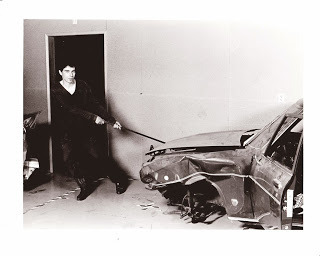
June 7, 2014
Je Ne Sais Quoi
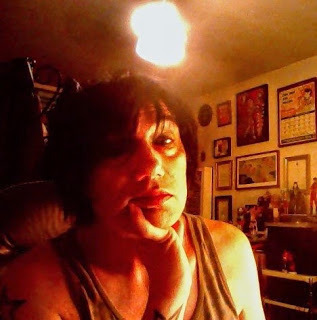
One of the bigger trends in internet culture of late is a style of writing called “flash fiction”. Just like flash mobs they are meant to be quick and annoying. Flash fiction, for those who haven’t experienced it yet, is a short story presented in a tightly-enforced limit of words, i.e. tell your story in 500 words or less.
Parameters this small hamper any chance of a story being told without any semblance of depth or perception. The effect is not unlike eavesdropping on half a conversation between two people above the roar of a truck growling nearby. Something’s going to get lost in translation and they’re already speaking fucking English.
I attribute the phenomenon of flash fiction on the public’s decreasing attention span via fast paced technology. As a result, people get their sensation immediately without any regard for the other elements that make a story so memorable, like location, mood, emotion, or even plot buildup. In a weird way there are no spoilers in flash fiction; the story IS the climax.
So, like a curious monkey who wanted to know just what these matches do when you scratch them I started hanging out at a crime flash fiction page called Shotgun Honey (www.shotgunhoney.net). Some of the writing was good, a lot of it was bad, predictable “Breaking Bad”/Tarantino rip-off shit, but the challenge was there: submissions had to be 700 words or less. Good luck.
I came up with a new story which I ended up posting myself, “The Pickpocket In The Slam Pit” (http://blackhairedboy.blogspot.com/2014/04/the-pickpocket-in-slam-pit.html). I would have loved to have it posted on Shotgun Honey, but the word count was double the amount allowed by the website. But I tried to make it work, how I tried:
When I saw the 1,340 word count I started thinking about what could be eliminated in order to keep the story intelligible after all the cuts. Since the count was nearly double the stringent 700 word limit I would need to cut out half the story!
For starters I would have to eliminate any extraneous characters from the story:
1. The bouncer – does he really need to be patted down at the punk club? Why don’t we just assume punks are allowed into a gig without being frisked. Umm, sure!
2. The first three guys that get their wallets lifted. We don’t need to know what they looked like or what their wallets looked like. Too much detail!
3. The band playing on stage (Crank Call) while Stew Rat slithers his way around the mosh pit. Does anyone really care what the names of their songs were? All punk bands sound alike!
4. The big bruiser who’s about to bust Stew Rat for his crimes. WTF? He’s not the main character, who gives a shit about him?
Okay, we’re now down to about 950 words. Only 250 words to go before my story can be published (IF they like it). I have to kill some more unimportant details:
1. Stew Rat’s spotty skin, freckles and mangy demeanor. How does that help the story? All punks look alike!
2. The name of the club, the town it’s in and general atmosphere of the evening. Gah! So much folderol. We want to get in on the action and WE WANT IT NOW!!!
Okay, so I killed the atmosphere, mood, characters, humor and half the plot of the story. All that’s left is the death of Stew Rat, and I’m still down to 800 words. Damn, double damn. My story’s still too long for Shotgun Honey. I suck, just like Herman Melville. Damn our words!
I don’t mean to pick on Shotgun Honey, in all fairness there are dozens of flash writing websites like them – ReadWave comes to mind - that require brevity for the attention challenged, but expecting any fiction that’s got a tale to tell in 700 words or less is going to be nothing less than awful.
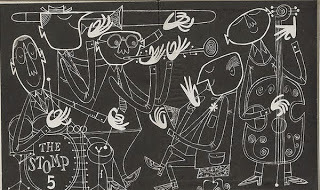
Lately I’ve been listening to a lot of early Seventies music, esp. from Europe where music became even more avant-garde than all the Mod and Psych experiments that preceded it. Here’s my ten favorite tracks from the past month:
1. Apache Drop Out – Edgar Broughton Band. The band that named this blog covered not one but two great songs in one fell swoop: Captain Beefheart’s “Drop Out Boogie” and Jorgen Ingemann’s “Apache”, both done really well. This was a big deal on FM radio when I was a kid.
2. Black Sheep Of The Family – Quatermass. Another great Harvest Records band (along with Broughton), this power trio minus guitar was very similar to The Nice. It’s a short, tight rocking song with great some great organ playing that alternates from atonal blasts with funky blues runs. And the pterodactyl album cover is a classic.
3. The Devil’s Answer- Atomic Rooster. Atomic Rooster featured the late Vincent Crane, the great keyboardist from The Crazy World of Arthur Brown. Although they were a primarily metal sounding band this song has some great jazz-blues grooves going on.
4. Kill Your Sons – Lou Reed. Although “Sally Can’t Dance” sold millions for Lou the critics really laid into it. This track sounds pretty great, with even wilder lyrics about Reed’s early years committed to Creedmor Psychiatric Hospital. Genius.
5. Hamburger Breath Stinkfinger – Arthur Lee. From his post-Love album “Vindicator” dedicated to MackDonald’s, “The Home of the Golden Tombstone”. More than a few feminist feathers were ruffled with the refrain, “Oh what a dish, she smelled just like a fish”.
6. I Hate Everybody – Johnny Winter. From his great “Second Winter” album, this swing blues track some terrific guitar playing from the man and is further enhanced by his brother Edgar swinging amazingly wild on both organ and saxophone. Another track on the album has Johnny playing mandolin to Edgar’s harpsichord. Blues with an imagination.
7. Willie The Pimp – Juicy Lucy. Juicy Lucy, to be frank, was a pretty awful band – The Misunderstood were brilliant – but they weren’t a follow up, they were more of a follow-down. On the other hand their cover of Frank Zappa’s Willie The Pimp may be the wildest cover of a Zappa song ever recorded. This was also a huge staple of FM radio back in the day and rightfully so. A whole album of Zappa covers would have melted skulls!
8. Mussolini- The God Bullies. Okay, so I’m throwing in some other decades in here. The God Bullies always made me laugh, sounding like a combination of a wicked goth guitar player with an insane drama student. This song ends with the tribal chant, “GEORGE BUSH, GEORGE BUSH, GEORGE BUSH”. From the Dope, Guns, and Golfing In The Streets album. One of the few Amphetamine Reptile bands I didn’t do a show with, and it’s too bad. They were great.
9. Night of The Hunter – Kim Fowley. Fowley spent so much time making fun of Steppenwolf he actually exceeded them in raunch with songs like Animal Man and this demented rocker. The lyrics are absolutely amazing: “It’s a rainy night in California, my boots are soaking wet…my guitar’s full of diamonds, my house is made of stone”…howling guitars and wailing organs with exploding drums. THAT’S how you make a rock & roll record.
10. The Blues Ain’t Nothin’ – The Charlatans. Although The Charlatans were the greatest American band that never was they’re definitely due some serious reexamining. This track would definitely fit in on Iggy Pop’s “Kill City” album with its spidery honky tonk piano and unleashed saxophones screeching the drug addict blues.
And that’s my Top 10 for this season. I’m sure I’ll find some more great buried treasures the next time I make a list. Happy listening>>>
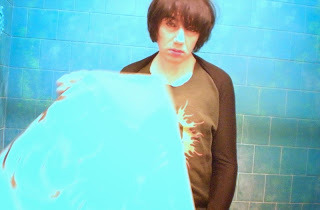
Oh, by the way...for those of you who want to spy, I mean follow me on Twitter, here I am...https://twitter.com/AndyAndySeven. There are about a hundred guys on Facebook named Andy Seven. I'm not any of them so don't waste your time.
May 24, 2014
Desert Island Short Stories
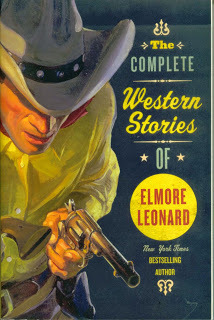
In 1942 the BBC programmed a radio show called "Desert Island Discs" where celebrities would come on and talk about what eight records they would take with them if they were stranded on a desert island. Since then there have been millions of variations on that concept, and I'm going to borrow it myself to list ten of my desert island short stories.
Short stories probably have more of a chance to reach a larger audience than ever before due to the rapidly decreasing attention span in most people these days. You could probably get more people to read a short work of fiction than a full-length novel these days.
It's also interesting how many writers are better served by the short fiction medium than they are by full-length novels, writers like Paul Bowles, F. Scott Fitzgerald, John Cheever, John O'Hara, Isaac Bashevis Singer, and many more. I think brevity in storytelling wins the game every time.
Anyway, for all intents and purposes here are my ten favorite short stories I could read again and again if I were stranded on a desert island - kind of like Burgess Meredith in that Twilight Zone episode where he's alone in the library with millions of his beloved books after the planet's been blown up and every body else is dead - in no particular order:
1. A Distant Episode - Paul Bowles: An American professor of linguistics arrives in an Arabic Maghreb town conducting a survey. Everyone is gruff towards him, but nevertheless he maintains a friendly demeanor. An irritable guide leads him to an increasingly darker part of the desert to buy local goods, where he is abandoned by the guide and abducted by a gang of thieves. The thieves tear out the linguist's tongue and tie a stream of tin cans around him like a common dog, making him perform tricks like an animal. Although he has been degraded to being treated like a common animal, even an animal eventually turns on its master.
One of the best things about this story is the way Bowles shifts the topography of the desert sets the mood of the story, ranging from bright and hilly to dark and flat. This is one of those short stories that stays with you forever.
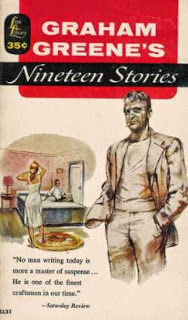
2. Torch Song - John Cheever: Torch Song is told from the POV of a man named Jack who has a crush on a woman named Joan. Both newly relocated to New York City, Joan keeps spurning Jack as he watches her date creep after creep, Jack's love always unrequited by her. As she keeps turning him down he watches her descend lower and lower in her taste in men.
Well! This is as believable as it gets. I can't even count how many fucking losers I've known like Joan, sinking lower and lower into the toilet with their bad romantic choices. Yet Jack still carries that torch. Throw it away, dude! I also loved The Chaste Clarissa and The Swimmer. John Cheever may be the greatest short fiction writer I've ever read.
3. Billenium- J.G. Ballard: The most claustrophobic story ever written, one where staircases are crowded with dozens of people living and sleeping in. Tides of people moving in waves against the direction the main character's headed in, a simple task of going somewhere takes hours! People sitting on top of each other like nests of roaches, it's one of the most powerful statements on overpopulation ever written.
4. Exactly Eight Thousand Dollars Exactly - John O'Hara: A wealthy industrialist gets a visit from his brother, a snotty, deprecating snob who's only dropping by to put the pinch on his brother. As the story progresses we discover that the corporate building was once a country club both brothers frequented in their youth. We also learn that the prosperous CEO was bullied mercilessly by his less industrious brother. The industrialist writes a check to get his brother out of his hair, the snobby brother maintaining an ugly, unrepentant attitude.
Although John O'Hara wrote many great short stories, this is my favorite. It's one of those stories that reveals more and more as you continue reading, not letting you really know the score until you reach the end. There's a rawness in the emotions and an ugly truth so many writers fear to tread.
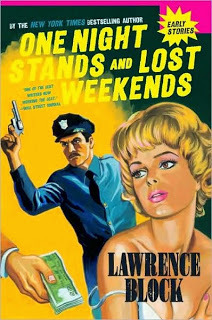
5. Big Blonde - Dorothy Parker: Big Blonde is the classic tale of a woman who measures her self-esteem according to her ability to make men happy. Written in the Roaring Twenties, it is as relevant today as it was when it was first written. Big Blonde is the story of Hazel Morse, better known as Haze (dig the irony) who's the ultimate party girl, and like all party girls dumped by one man after another as the years go by.
It has often been said that both Dorothy Parker and Patricia Highsmith wrote misogynistic stories, but I don't think the men fare any better than the women in them. I believe both writers don't harbor any hatred for women, but more likely don't think much of women who use men left and right like Hazel Morse.
6. The Ice Palace - F. Scott Fitzgerald: Ice Palace begins with the main character Sally Carrol looking out her window in her home in hot and torrid South. Engaged to be married to New Yorker Harry Bellamy, she travels up to New York with him to visit his family and friends.
The trip turns into a revelation of sorts for Sally when Harry drops his guard and shows his snobby, insensitive side to her, cursing all Southerners among other things. On a cold and wintry night the pair go to a large auditorium carved out of ice to watch a hellish pep rally. Sally's snooty fiancee disappears during the rally into a dark, narrow channel of ice with Sally following him, eventually becoming lost in the cold, narrow darkness.
Ice Palace may very well be Fitzgerald's Fuck You to New York and literary society, depicting small town Southerners as a soulful bunch and meat head Yankees as a load of loud, boisterous Pagans. Maybe, maybe not. Nevertheless, Ice Palace is a brilliant work.
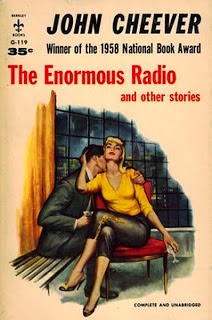
7. The Hyannis Port Story - Kurt Vonnegut: Published shortly before the Kennedy Assassination, Hyannis Port Story is a very funny story about old Commodore William Rumfoord, a staunch Goldwater Republican who's unlucky enough to be the neighbor to President John F. Kennedy's off-duty hideaway. The Commodore's already pissed off to death that his small hometown has turned into a shrine to the President complete with gift shops, noisy tour guides and even noisier tourists.
Yes, The Commodore is so pissed that tour guides refer to his house as "The Ugly One Next To The President's" that out of spite he posts a huge billboard of Goldwater's face with spotlights all around it. The last straw comes when The Commodore finds out from a Secret Service agent that his pride and joy son has been sneaking around with a Kennedy relative.
I liked this Vonnegut story over his others because he didn't seem to try as hard as he did with others. I felt a very effortless humor in this one that I found very appealing. I also liked Next Door and The Foster Portfolio, too, and Vonnegut's sense of humor never fails.
8. Memory In White - Budd Schulberg: Washed-up boxer Young Pancho Villa The Third makes a go at being a ring announcer by buying a white suit and a megaphone in a pawn shop. He shows up at the gym he used to box at and announce all the fighters sparring in the ring. Trouble is he has a thick Puerto Rican accent as well as a sever speech impediment. Through the miracle of annoying persistence he graduates from gym announcer to all-time ring announcer. His debut as a legit ring announcer is of course met with tragedy.
Schulberg was a genius at capturing the sounds and mood of the New York streets, never romanticizing them but breathing them to life, warts and all. Although he will always be known as the writer of On The Waterfront and A Face In The Crowd his short works definitely deserve to be rediscovered.
9. Confessions Of A Man Insane Enough To Live With Beasts - Charles Bukowski: Probably the most compressed version of the Bukowski legend that many remember from the Barfly and Factotum movies. There's the story of his awful skin problems, even more awful jobs held at rock-bottom wages, and the girl he meets in a bar who brings him home to the nutty old yacht-boating sugar daddy. Everything you ever wanted to read about Bukowski is distilled in this 21-page story.
10. The Monster - Stephen Crane: This is actually a novella rather than a short story, but I added it here, anyway. Henry Johnson is the black coachman for a well-to-do white family in upstate New York. He forms a strong bond with the boss' four year old son, Jimmie Trescott, which supercedes any racial barriers. When Henry isn't working for the white family he courts the prettiest black girl in town and dresses like an absolute dandy.
While on his date the town goes into an uproar over a fire at the Trescott's house and Henry runs over to save Jimmie by racing into the burning house to save him. Consequently he is severely burned beyond recognition from the fire and has lost what was left of his sanity. Out of guilt Dr. Trescott keeps him at home, away from prying eyes. The whole town, white and black alike have now ostracized Henry Johnson for his disability in spite of the fact that he committed a completely charitable act.
The Monster is a brilliant mediation on racism, societal intolerance and personal guilt. It's arguably Stephen Crane's finest work, a writer more people should seek out. The Blue Hotel and The Open Boat are pretty brilliant, too.
Unfortunately I've left out many great short fiction writers like Graham Greene, Joe R. Lansdale, Harlan Ellison, Elmore Leonard, Bernard Malamud and Raymond Chandler, to name a few, but that's the beauty of libraries and books. There are a million stories to be told and it's all in your grasp, anytime, anywhere. Even on a desert island.
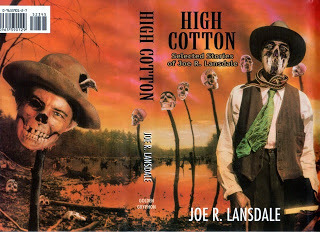
May 10, 2014
Let's Talk About Guns

Well, I had to do it. I really did. Anyone who's going to write a novel which employs firearms needs to handle them so they can get a general idea of what they're talking about. Writing a crime novel without ever actually handling a gun is a lot like writing about the Tour De France without ever having ridden a bike. In order to get my savvy together I went to the Los Angeles Gun Club in downtown Los Angeles, an excellent indoor shooting range where you can either rent a gun and buy bullets or BYOG (Bring Your Own Gun).
I went with my friend Alex (aka Axis) not only because he was into it but also because the Gun Club has a mandatory buddy system. There are no lone wolves allowed to shoot - you must bring a friend in order to use the facilities.
Showcases of guns are by the front desk and you're presented with a very large choice of pistols (there may have been rifles, too) to choose from. Axis chose a 9mm. Glock and I chose the Sig Sauer 1911-45, the 1911 because it looked powerful and intimidating.
I saw the legendary .357 Magnum made popular in the Dirty Harry film series and couldn't see myself firing a gun with a barrel that large. I learned later on that the Magnum was originally designed as a hunting pistol meant to shoot deer and other wood creatures and not psychopathic killers in San Francisco.
After a quick safety lesson on how to fire a gun and a brief tutorial on how to load bullets into the magazine we were off and running to the firing range. The Gun Club also had a wild selection of targets to choose from, varying from the standard round bullseye target to a drawing of a zombie girl in a string bikini whose skull and arms were decayed but still managed to have a prodigious set of breasts and legs.
We were given headphones because the combined gunfire blasting from a dozen firing booths is positively deafening! I went first and have to confess that the experience was fairly intimidating at first. My gun felt heavy in my hands and just squeezing the trigger felt like I was shaking hands with Death. And it was!
The Sig Sauer 1911-45 is a powerful piece of work. The gunshots were deafening and with every shot a burst of flame leaped out of the barrel of my gun, followed by the bullet shell flying out of the breech like crazy right by my face. An attendant walked by every five minutes with a garden rake pushing all the spent bullet shells off the floor. Too many bullet shells on the floor would have sent everyone slipping and sliding all over the place.
While I was firing the gun it dawned on me at how frightening and powerful a gun can be and how ridiculously flippant it gets treated on TV shows and the movies. When you see guns tossed around as if they were toys and fired with one hand oh so casually it defies credibility. Once a pistol is held in your hand you realize it takes both your hands to fire it properly.
Axis let me try out his 9mm. Glock and it was a much lighter pistol that was easier to load and fire. The action was a lot smoother than the Sig Sauer but the sheer terror that the SS struck me and the other shooters - people were staring at me with the fear of God, no small feat at a firing range - was enough to sell me on using it again when I return to the firing range.
Like a lot of ignoramuses I expected to see a lot of fatsos in Army fatigues busting caps to their heart's delight but that wasn't the case. I saw a lot of young couples, mostly Asian, making it their Sunday afternoon dating rendezvous having fun shooting zombie targets and laughing. I don't think anyone there fantasized about shooting the President. Sorry.
I'm glad I spent some quality time with a gun, a good, scary one - I honestly believe it helped me with the novel I just completed (out soon!). Any asshole can write about guns as if they're just an average tool like a monkey wrench but they're nothing of the sort. When a gun's fired it seriously demands the drama it's inspired through the years in books and film. Like shaking hands with Death.
April 26, 2014
The Pickpocket In The Slam Pit

11:45 PM. Skipjack's. Long Beach, California. Skipjack's was a hardcore punk club in the South Bay area. The club was an old wrestling-cum-roller derby auditorium framed in stucco and neon lights with a lot of rotting wood inside. The auditorium itself seemed to be slowly decaying from the salty sea air that wafted northward from the harbor a few miles away.
Punks from all over the hoods of Wilmington, Lomita, and Pedro all converged every Friday and Saturday nights at Skipjack's. Stew Rat Nickson was no exception, a miserable specimen of lowlife punk rock, a skeletal, gangly youth with clammy white skin housing a relentless network of freckles and pimples. He had so many freckles and pimples nobody knew where one began and the other one ended.
His head of short hair was dyed a sickly orange with bald patches that had other colors dyed in there, and dyed so badly that some of the dye stained his neck and ears. Mr. Stew Rat simply didn't care.
Tonight was the night of Stew Rat's big score. It was simple: his tartan bondage pants had a long zipper running down the length of his right leg with a cargo pocket running from upper thigh to his ankle for hiding things...like wallets.
The plan was to get into the slam pit and find himself the better, aka well-fed, suburban punks and pull their wallets and cram it down his secret pocket. The club was so booked with moshers he would easily score, and no one would be the wiser. The quickest smash and grab ever.
Crank Call were on stage and tearing it up, playing a mile a minute and roaring as ferociously as a jet plane taking off. The lead singer, a beefy sunburned monster in a crewcut stepped up to the mike and bellowed, "HOW MANY OF YOU DICKS CAME HERE TONIGHT TO FUCK SHIT UP? YEAH!"
The audience roared and Stew Rat pushed and jostled his way through the crowd, knocking over a few beers in the process.
"THIS FUCKIN' TUNE'S CALLED 'BOMBS AWAY'. 1-2-3-4!!!!"
Crank Call pounded into the song, drums beating machine like rhythms like runaway oil pumps and guitars stuttering like the screaming factory noises straight outta Long Beach.
Stew Rat shoved his way further towards the pit, bodies parting further and further away from the chaotic dance of destruction, a sausage fest of tribal brutality. Young men careening and bashing into each other like wayward steel balls hitting bumpers and flippers in some god-forsaken pinball machine.
Stew Rat grinned with his decaying orange teeth glowing in the darkness. An occasional mosher would bump into him, some smiling and saying, "SORRY, DUDE!".
Stew Rat didn't care, they were fair game to him.
He pulled the zipper halfway down the long cargo pocket, readying himself for the big steal. He was about to hit his first victim when the song ended abruptly as all hardcore songs go.
"FUCK YOU, DUDE! THIS ONE'S CALLED 'PIT BULL NUMBSKULL'! 1-2-3-4!!!!"
Crank Call's bassist played a rumbling groove, shaking the walls like a 10.5 earthquake on the Richter scale. The guitar flew right in like a Space Shuttle gone berserk.
"PIT BULL...NUMBSKULL! PIT BULL...NUMBSKULL! YOUR BRAIN'S HALF EMPTY, YOUR BRAIN'S HALF FULL! PIT BULL...NUMBSKULL!"
Stew Rat licked his lips and chortled.
"Come to Poppa, fucker!" He angled his way in to a clutch of young punkers all collapsing in a heap. He half-humped the cleanest looking one from behind and quickly slipped his fingers into his back pocket and slipped the fancy crocodile skin wallet down the cargo pocket.
"Score!"
He moved over to another clutch of guys ready to collapse in a heap and dog piled underneath, pulling one wallet, then another out of the range of anyone's vision. Both wallets went straight down the cargo pocket.
As soon as he got up on his feet he saw a big fat dude crowd surfing, the kids around him holding up the surfer with their arms suspended above their heads.
"This is too easy!" Stew Rat chuckled. "Easy pickings to be sure!"
He spotted a wholesome looking punk and leaned in on him, slipping his fingers effortlessly into his rear pocket. He didn't have a wallet in there because he pulled out a lump of snot rags.
"YUCK! He probably keeps his wallet in the front. That sucks".
Stew Rat saw another clean-looking punker hoisting the fat surfer with both arms up and rubbed up against him. Sliding with the agility of a ferret, he slipped his fingers into the back pocket and quickly pulled out a wallet with punk rock stickers all over it and tossed it down the now bulging cargo pocket. He finished his steal just in time as Crank Call finished their song.
"Ho, ho, ho, this rules! This might be my best night ever! Long Beach is the greatest!" He laughed to himself. He looked around feeling mighty smug about himself until he caught a huge, dark Latino dude in a wife beater staring at him across the pit with sheer hatred.
"Shit, is this asshole onto me? He looks like he saw something. Maybe everything", Stew Rat got nervous.
The Latino dude was about to cross the pit and attack Stew Rat.
"What does this fuck face want? Does he want a split, is he gonna narc on me or is he gonna pound me for all my shit?"
Stew Rat began walking away backwards, but it wasn't necessary. Crank Call's singer stomped up to the microphone and barked.
"YOU JAGOFFS ARE WEAK!!!! I WANNA SEE SOME SERIOUS MOSHING, DICK FACES! THIS SHIT'S CALLED 'BREAK, BROKEN, BROKE'! 1-2-3-4!"
The band busted out a stormy wail of radioactive waste, guitars feeding back and spitting out electric noise and the singer howling like a witch doctor fished out of the Pacific Ocean.
The guys in the slam pit were now doing the circular chicken dance like demented Navajo warriors, stomping their feet and pumping their arms like a circular locomotive around the dance floor.
The Latino quickened his pace towards Stew Rat, dodging the slam pit circle and getting closer and closer to catching up with him. Stew Rat began to panic, wet himself, whimpered and broke out in a nasty sweat. A musky odor filled the air.
Just when his pursuer was about to catch up with him a stage diver leaped off the stage and landed feet first on the big, dark man's head, kicking him unconscious. The slam pit opened up and bouncers pushed their way in to take away the unconscious Latino. They grabbed him by his legs and pulled him across the club like a limp wheelbarrow.
"OFFICER DOWN, OFFICER DOWN. NO SERIOUSLY, LET'S DO ANOTHER SONG, THIS ONE'S CALLED 'PISSPOT PRINCESS'". The band ripped into their newest number with a vengeance.
Stew Rat calmed down in the knowledge that his pursuer was knocked out cold and put out of the way.
He spied his next victim, a beefy well-fed punk rock jock. Everyone in the pit pressed up against his body so his pressing up against him wouldn't look conspicuous at all. This was too perfect. He shoved and slammed his way towards the jock, ricocheting with the rest of the guys in the pit.
"CLOSER, CLOSER, ALMOST...THERE!" Stew Rat practically humped the jock with his torso, quickly slipping his fingers into the back pocket and pulling out the wallet. Just as he was about to toss it down the secret pocket, he heard someone yell, "LOOK OUT!"
The bondage strap that ran across his trousers was caught in the jock's left leg and he was stuck to him and couldn't extricate himself, meaning he was stuck when he saw Crank Call's guitarist jump off the stage and land on top of him with the guitar's head stock impaling him deep into his skull, the stainless steel machine heads knifing into his cranium, thus ending the short lived crimes of Stew Rat Nickson.
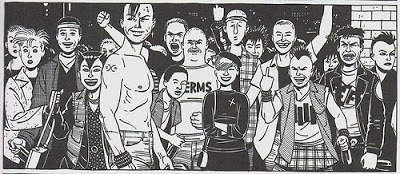
Copyright 2014, Andy Seven.
Top Illustration by Rebecca Seven. Lower Illustration by Jaime Hernandez.
April 11, 2014
Now Playing ABSOLUTELY FREE on You Tube

Once upon a time, well a few years ago I wrote a periodic blog called "Stuff I Burned From TCM" which was a regular round-up of movies I burned off the TV set from Turner Classic Movies because they weren't available on video. TCM probably caught wind of that happening too often so now they're in the business of selling overpriced dubs of these films.
Well, there are still a ton of things you can't buy from TCM but you can definitely see for absolutely free on You Tube, and not just scattered film clips but the movies in their entirety. You can even save them and burn them, too. Life is wonderful!
In addition to the movies listed below I've also burned dozens of Heckle & Jeckle cartoons (Fifties Terrytoons genius) and a funny Shemp Howard solo short called "Mr. Noisy", where the moonlighting Stooge spends all his leisure time heckling tennis players, golfers and baseball pitchers at the top of his lungs. Wicked!

Alias Nick Beal (1949) Ray Milland breaks the bank playing a demonic apparition who helps a civic minded District Attorney (Thomas Mitchell) with framing a untouchable racketeer and consequently tempting him with a shot at the Governor's race, seal with a pact.
Many of the scenes with Mitchell and Milland either takes place on a foggy wharf or in some oceanfront dive (Don Burnham returns!). Of course, no noir is complete without a femme fatale so the great Audrey Totter provides a moral base, veering from dockside slut transformed by Beal into a politico temptress, a la Monica Lewinsky.
Totter delivers a great, convincing performance in her two phases but it's clearly evident that this is Milland's show all the way. He plays The Devil with great relish and seems to enjoy himself quite a bit playing a nasty, evil spirit.
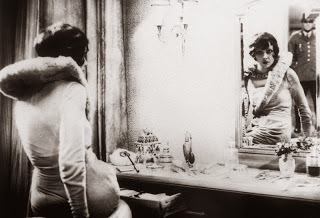
Asphalt (1929) is a German silent film classic directed by Joe May, and if you liked the Louise Brooks classics "Pandora's Box" and "Diary Of A Lost Girl" you'll very likely enjoy this one, too. The film begins with breathtaking scenes of Berlin night life in the Twenties with the serpentine underworld slithering through the crime-ridden streets.
Joining in the larceny is Else Kramer, played by the great Betty Amann (shown above), conning an old jeweler with seductive behavior. While she's teasing the old fogey out of his diamonds we see a big, dumb lug of street cop Albert Holk (Gustav Frolich of "Metropolis") doing his boring job of guiding cars across the street.
After Else is accused of swiping diamonds in the store they grab a cop down the street, and the next thing you know Officer Holk takes Else in for booking. Unfortunately, Else turns on the water works in the cab and persuades Officer Holk to take her to her flat first so she can grab a few of her things.
She turns on the charm and the cognac and Office Holk finds himself in bed with the criminal. Was their love making real or was it just another con job pulled by Else? It's hard to tell especially since her current boyfriend, a big-shot criminal busts in on them later and things come to a deadly head.
Asphalt is another great film about an honest man fallen from grace by a demonic woman. The Germans seem to be fond of this plot since The Blue Angel mind the same territory with dramatically different results.
Amann may not be as endearing as Brooks or as humorous as Dietrich but had she moved to the States she probably would have had a great career as a film noir femme fatale. If you like great silent films then Asphalt should be at the top of your list (right after Piccadilly).
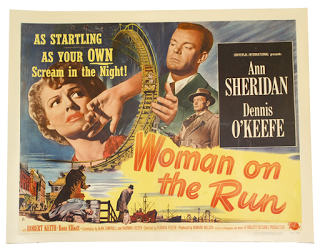
Woman On The Run (1950) An excellent noir completely owned by Ann Sheridan as you've never seen her before. After playing the reliably good girl in so many Warner Bros. films in the Forties she becomes a nasty bitch in this film, looking and behaving a great deal like Rita Hayworth did in "Lady From Shanghai".
The great irony of the story is that the real person "on the run" is Sheridan's husband who suffers from major paranoia after witnessing a drive-by shooting. Since Ann is the only one who can lead the police to a husband she hates she builds up a hard as nails attitude. You wonder who she has more contempt for: her husband or the authorities.
Filmed almost entirely on the streets of San Francisco, portions of the film almost verge on being some lo-fi travelogue, Ann hitting the pavement of Market Street, Fisherman's Wharf and old North Beach. The street scenes put the location shots of "D.O.A." to shame!
What makes the film so brilliant, however, is the way both the police detective, played by Robert Keith, and the pesky news reporter, played by Dennis O'Keefe, force her to give them more and more information about her much hated husband. The woman on the run flees the streets of Frisco Town like a demented harpy confessing her feelings about a man she once loved.
The great climax to this film takes place on a roller coaster in an amusement park (shades of "The Burglar"!). Robert Keith you'll recognize as the small town sheriff in "The Wild One" and Dennis O'Keefe is great as usual just as he was in the Anthony Mann noirs "Raw Deal" and "T-Men". Highly recommended!

March 29, 2014
Stone Age Electronica (1968-1971)
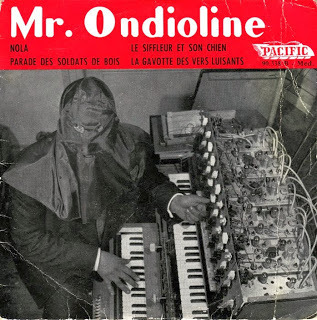
One of the most fascinating periods in the history of pop music was the electronic revolution in the late Sixties, most notably the inauguration of the Moog synthesizer in a pop context. Very few revolutions in music disturb the record buying public: punk rock, for example, rap when it really mattered, but arguably the synthesizer might have been the most radical.
Just when rock music was getting set in its ways in 1968 with Cream and Jimi Hendrix-influenced long guitar solos, drum solos and rock operas a bizarre classical album by Walter Carlos and Benjamin Folkman called “Switched On Bach” was released and proceeded to sell half a million copies. Robert Moog’s delightful instrument had arrived to the mainstream public and they responded in alternate shades of delight and horror.
Horror because the synthesizer wasn’t considered a warm instrument by many seasoned musicians, who seriously believed at the time that it was a cold computer set out to replace real musicians. To a certain degree this has actually happened, but at the same time we’ve heard the synth long enough to understand that it can also enhance what real instruments do, and beautifully.
Prior to Bob Moog’s invention there were several electronic keyboard predecessors that made their way in pop music, most notably; (i) the mellotron, all the rage in prog music with bands like King Crimson and The Moody Blues, and; (ii) the ondioline, created in France in the late Forties and could emulate the tone and pitch of any conventional musical instrument.
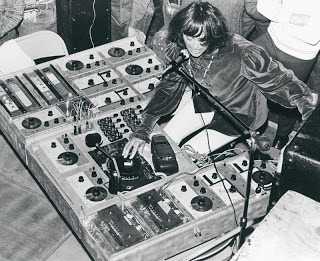
But it was the Moog that created the biggest splash and controversy when it hit the scene. The emergence of the synthesizer almost appeared to be a logical response to the ubiquitous psychedelia that was all over pop music at the time. Finally, here was a keyboard that sounded so psychedelic it would put any fuzz guitar sound to shame. It couldn’t have come at a more auspicious time in musical history.
Once the synthesizer became employed heavily in rock music it was utilized in either one of two ways: (i) as a legitimate keyboard playing conventional melodies, as Emerson, Lake & Palmer did in 1971, or (ii) as a wallpaper of musique concrete, as The Monkees did with “Daily Nightly” in 1968, or Eno’s work with Roxy Music in 1972.
To synth or not to synth, that is the question: some musicians even bypassed the super expensive keyboard altogether and created their own brilliant electronic keyboards. Some of the bands that featured their own electronic keyboard inventions were The Silver Apples and Fifty Foot Hose.
The Silver Apples were a two-piece band from New York featuring a guy named Simeon playing his invention named, what else, The Simeon, and a drummer who played a 13-piece kit (!) with five cymbals – this is pre-heavy metal, remember. Diagrams of both the Simeon and Dan Taylor’s drum set up were both printed on their great CD set.
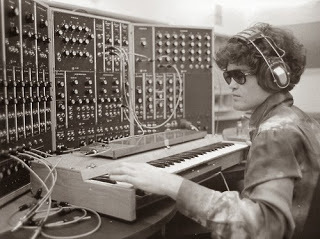
Silver Apples sound not unlike another New York band, Suicide, with droney oscillations playing repetitive hypnotic melodies while Simeon sings in that dreamy voice Alan Vega made popular. Just to keep things down to Earth there’s an occasional banjo plunking in the background and it sounds just as exotic as The Simeon.
Fifty Foot Hose came around the time of the San Francisco explosion (1966-1968) and featured a great singer named Nancy Blossom. What made them stand out from the rest was a unique electronic instrument invented by band member Cork Marcheschi made up from combination of elements like the theremin, several fuzzboxes, a cardboard tube, and a speaker from a World War II bomber. To the average listener it sounds like a synthesizer.
Fifty Foot Hose released one album, “Caludron” on Limelight Records which also released “The Minotaur” by Dick Hyman, which I wrote about several years ago. The most popular track from Cauldron is the slow dirge rocker “If Not This Time”, which did well on FM radio back in the day.
While Fifty Foot Hose and Silver Apples came off as serious and dramatic there was also the more playful bunch like White Noise from England. In June 1969 White Noise, fronted by David Vorhaus released the groundbreaking album “An Electric Storm” on Island Records. The album was created using a variety of tape manipulation techniques, and used the first British synthesizer, the EMS Synthi VCS3.
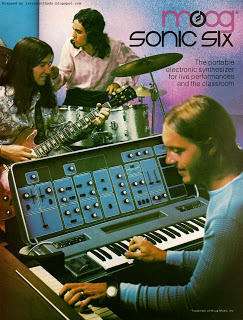
Tracks from the album like the FM radio favorite “Here Come The Fleas” have a funny cartoonish vibe featuring member Delia Derbyshire’s zany vocals enhancing the surrealism. Vorhaus adds a beautiful, melodic poignancy to tracks like “Firebird” and “Your Hidden Dreams” which recall Van Dyke Parks’ album “Song Cycle”.
Annette Peacock released an equally innovative album in 1971 on RCA Records titled “I’m The One” that deftly merged jazz, funk and electronics (from a Moog prototype given to her from Mr. Moog himself). There’s some great electronic treatments used on her voice, especially on her unique cover of Elvis Presley’s “Love Me Tender”. Annette Peacock pretty much paved the way for artists like Tara Busch to flourish today.
What makes all these artists so special was their dedication to creating new sounds and risking commercial failure and critical disapproval – yes, even critics showed absolute contempt for electronics for years. The role of the artist is to continuously explore, discover, innovate and show us the way of the future, not follow old paths.
The artists listed above and many others not mentioned (like Perry & Kingsley, Curved Air, etc.) were pioneers of electronics and have left behind a legacy of brilliant electronic sounds for us to enjoy forever.
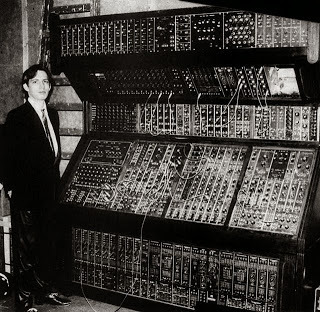
March 15, 2014
The Name Dropper's Symphony
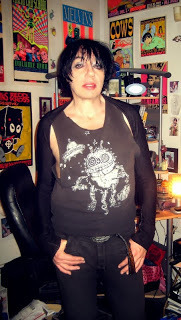
A couple of years ago a friend of mine published his memoirs and it was easily the most shameless display of name dropping I've ever seen. Each and every page relentlessly referenced folks both famous and obscure with a bombing frequency that would put Operation Desert Storm to shame. I believe that the writer assumed that if enough people saw their names in print the book was a sure fire bet to sell tons of copies.
The book of course tanked miserably because the book resembled a lopsided phone book with its endless list of names. Ultimately his book (in the words of Phil Ochs) wouldn't interest anyone outside a small circle of friends.
But, zounds! What an inspiration: I have decided to write my own memoirs and hope I can drop as many high-profile names as this sagacious scribe. All of the following tales are real and star-studded, honest. I will try not to disappoint. Excelsior!
**********************
I remember when Richard Meltzer had his radio show "Hepcats From Hell" on KPFK and my friends The Human Hands, The B People and Monitor all played full-length sets broadcasting live at KPFK studios in North Hollywood. It was an all-night show on a Saturday from 12 midnight to 4 AM.
My favorite Human Hands songs were "I Got Mad" and "Trains Vs. Planes" with the late, great David Wiley delivering some very dramatic vocals while the keyboards and propulsive drumming from Dennis Duck set up the suspenseful wall of sound. They were great.
The B People were equally excellent with my friend Pat Delaney on sax, who I played alongside for The Screamers and Arthur J. And The Gold Cups. Pat was also in The Deadbeats. Alex Gibson was the leader of the band and had this great sing called "Can Can't".
Where did I come in? I was asked to bring my horn and play along on a free jazz finale version of The Beatles' "Hey Jude" with Alex crooning the Paul McCartney part. All three bands played on this hoary chestnut and Pat and I got to wail or horns at 4 AM. We made enough of a row to even wake Ringo Starr (who probably lives in the Valley) up.
**********************
In 1981 I lived in New York as a guest of Arto Lindsay, who had a band called DNA at the time and were part of a compilation called "No New York". He was house-sitting John Lurie's apartment, John Lurie star of several Jim Jarmusch films. Arto was also in a band with John called The Lounge Lizards and was gracious enough to let me stay there. He promised me a gig in The Lounge Lizards Big Band, which never materialized. Oh, well.
I hit The Village Voice want ads looking for a cool band to play in. I had a very strange phone call with Rudi Protrudi of The Fuzztones, who then promoted something he called "Popodelic Wave", which to this day I still don't understand!
I did audition, however, for Jeffrey Lohn of the Theoretical Girls who was putting together a guitar orchestra much in the style of Glenn Branca and Rhys Chapman. I valiantly tried hard to sound cool with my Fender Mustang guitar but couldn't read music, which was a requirement for the band. Yes, there was sheet music on real metal music stands!
Jeff was very patient, however and said I probably wouldn't work out, but he had some friends who were looking for a second guitar player. He scribbled a phone number on a piece of paper with the names Thurston and Kim written on top. Whoa. I never called, however, because I thought any band with a guy called Thurston in it might be pretty scary. It's cool, though, I think things worked out well for them, anyway.
**********************
I was jealous when my wife Rebecca, formerly of Frightwig, told me about the time she shoved Axl Rose of Guns 'N Roses at the dance floor of English Acid, or maybe it was White Trash A Go Go. Then I relaxed after recalling the story about how in 1984 I crossed Sunset Boulevard in my hand-painted Chelsea high-heeled boots after seeing Gun Club (okay, so sue me) and hearing a very familiar voice coming from a devil red limousine, "DUDE THOSE ARE SOME SWEET KICKS! WHY DON"T YOU CRUISE OVER!" Yes, it was David Lee Roth from Van Halen.
No, like Hell was I going to sell my hand-painted boots, besides, I heard he's notoriously cheap like Steven Tyler from Aerosmith, but that's another story. There are many stories and even more names I can drop, forever and ever.
To tell you the truth this name dropping business is pretty tiresome. I don't know how this boring cunt did it, I'm already exhausted about bragging about people I haven't even thought about in years. I guess it takes a certain gumption to brag endlessly about people all the time. And no, I never dated Courtney Love!



